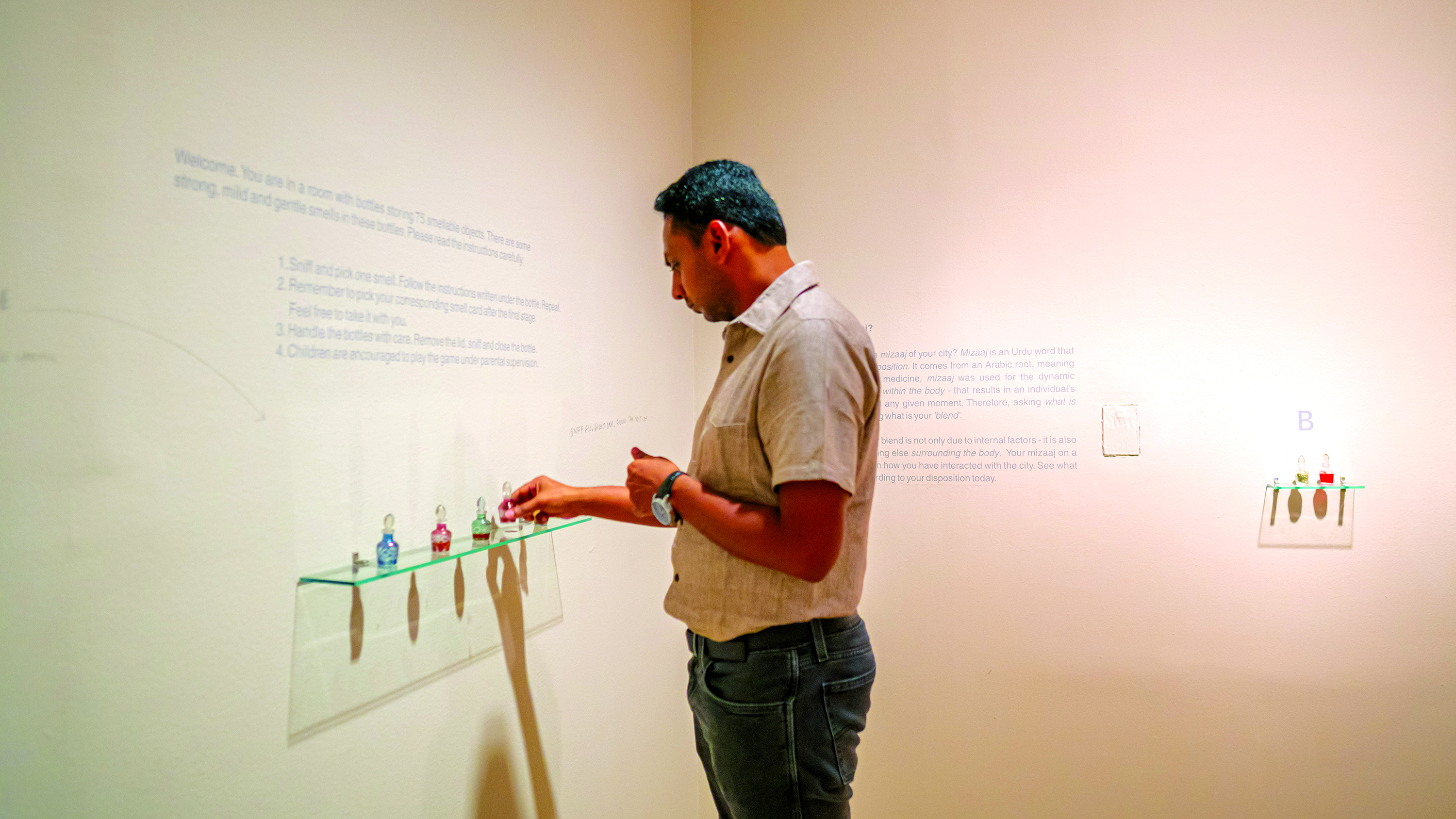
The intoxicating fragrance of Saptaparni, the intolerable burning smell of smog — smells so unique to the city that you know you are in the Capital, even with your eyes closed.
A fusion of both fragrance and odour, just like every other aspect of the city, Delhi’s smell is eclectic to say the least. This brings up the question, is it possible to navigate a city through its smell?
A yearlong artistic research and project attempts to find answer to this question. Commissioned by Kiran Nadar Museum of Art – a private-funded museum of art – ‘Smells of the City: Scents, Stench and Stink’ was led by anthropologists Ishita Dey and Mohammad Syed.
“Smells surround us. Sometimes we can recognise one from the other. But mostly we can’t. If it’s a little subtle then they are ignored altogether. A little louder and they become intimidating. People have their own smells, so do houses, and streets too… And the cities are known by their smells – different for different areas and changing with the time of the day and even seasons,” adds the duo.
The culmination of the project finally led to an exhibition, ‘Smell Assembly’, that puts together the collections and annotations of smells from three sites in the city — Majnu ka Tila, fish markets of Chittaranjan Park and ittar shops and spice markets of Old Delhi.
Stored in small bottles, it contained strong, mild and gentle smells, transporting viewers to various landscapes and memory-scapes through olfactory experience.
The sites were carefully chosen. Two of them being refugee settlement colonies with long histories was one of the key reasons for the selection. Of course, one simply cannot leave out Old Delhi, when they are talking about the city. And what better place to awaken your olfactory sense than the spice and Ittar market.
Explore the idea of nostalgia associated with smell, was one of the most important objective of the process. Adding to his, curator Akansha Rastogi points out to the particular smells that distinguishes a place, “From the incense sticks of the monastery and the distinct smell of yak momos at Majnu ka Tila to the stench of the fish markets in CR Park.”
Mapping the sites through smell, Syed and Das created olfactory maps that describes the different variety of smell one can experience in a space.
The exhibition space was dotted with notes of their research that illustrates the methods and process employed for the project. As Rastogi puts it, “Smell Assembly opens an anthropologist’s field diary in a contemporary art museum.”
It urges the viewers to contemplate how urban dwellers navigate the inescapable olfactory map of the city. “How would an olfactory map of the city look like and how does it express the social? Can social relations be expressed in terms of control over one’s own and surrounding smells? Who has the control over its perpetuation and expression, and who has to live with it and under what condition,” are some of the few questions they raised.
According to the anthropologists, smells help us to navigate through nooks and corners of every city and Delhi is no different. “One of the challenges that city’s planners face is to keep the city smell free. In this context, it would be important to remember Delhi’s tryst with closure of industrial units, shift from diesel and petrol run automobiles to compressed natural gas or constant debates on the ever-increasing height of city’s landfills.”
Not just these sites, the project also takes into consideration the smell of what makes a city what it is – its people. The exhibition follows trails of smell-work of women cab drivers, Shahri Mahila Kamgar Union, sanitation workers, smell-workers of Gadodia market, manual scavengers, ittar makers and associated clusters.
Having multiple layers, the exhibition explores their perspective and ideas of smell. For instance, it points out to the list of smells that came up in conversation with domestic workers. ‘Sweat, body odour, saliva stained pillow covers, stench of soaked clothes’ to name a few. The exhibition also puts together a parcha from a fictional smell-workers union that re-imagines smell as the primary basis of reorganising work and rate cards.
Engaging with the city at large, it opens up a way of identifying and leads to building a different orientation of the city through its smells.
Quite interestingly, it also challenges the notion of the prominence of visual aspect in art and gallery spaces and it focuses on the otherwise ignored sense of smell. A great deal of care was taken to refill the bottles to retain the smells in the sanitised space of the museum.
As smell leads one to memories and nostalgia, intimacy become an important aspect of the exhibition. With accumulation and analysis of data in one space – it was surely an assembly, and an intimate one at that.
The decline is primarily due to damage to the "heart-brain link" triggered by chronic kidney…
A French-style open-air café is drawing Delhiites back to a river they long forgot
The handset features a dual rear cameras, 6.72-inch 144Hz display, IP64 water resistance, and up…
Delhi Police raided a late-night illegal bar in Samaypur Badli, detaining 25 people and seizing…
A rear-end crash near Delhi Haat triggered a blaze that gutted both vehicles, though no…
Court grants probe agency more time as NIA pursues wider links in Red Fort blast…